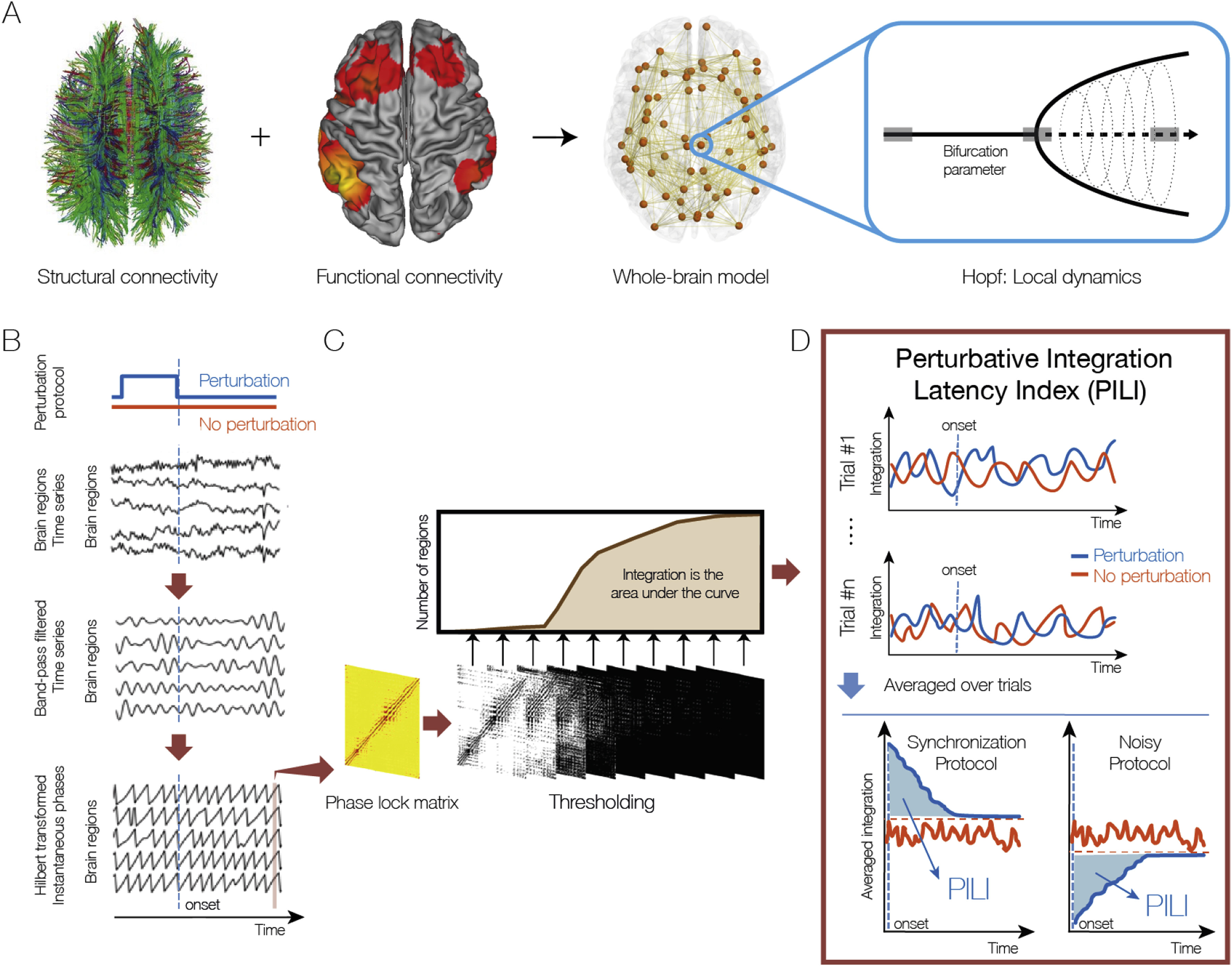Perturbing the brain to discover its dynamics during wakefulness and deep sleep
Perturbing the brain to discover its dynamics during wakefulness and deep sleep
This new methodological approach only possible in computational models is presented in a study published in the journal NeuroImage of which Gustavo Deco, director of the Center for Brain and Cognition, is the first author, signing in conjunction with members of his team and with international participation.
Studies conducted using neuroimaging techniques have enabled verifying that the human brain displays very different patterns of activity in wakefulness or during deep sleep. Nevertheless, it is not clear why brain states differ in dynamical complexity, for example in the degree of integration and segregation of the brain networks over time.

Fig. 1. Procedure for computing the Perturbative Integration Latency Index (PILI).
A team of researchers has devised an innovative way of studying human brain functionality using an induced perturbations protocol on a complete computational model of the brain in order to study the mechanisms underlying the dynamical stability of brain states. This new approach enables producing in silico perturbations that could not be done in vivo thus achieving more in-depth investigation of the biophysical mechanisms underlying the changes in the dynamical complexity of brain states observed experimentally.
The study has been published recently in an article in the journal NeuroImage of which Gustavo Deco, director of the Center for Brain and Cognition (CBC) and ICREA research professor with the Department of Information and Communication Technologies (DTIC), is the first author. His co-authors are Victor M. Saenger and Beatrice Jobst, members of his team, together with researchers from various international centres in Germany, Denmark, the USA, France, the Netherlands, Portugal and the UK.
The main variable of the study is the dissipation of the Perturbative Integration Latency Index (PILI), which measures the recovery of the levels of global integration back to baseline once the perturbation ceases. By applying this methodological approach via these new protocols, the researchers have discovered that the PILI is higher in wakefulness, that is, recovery is slower, than in states of deep sleep, given its dynamics, which corroborates previous experimental results.
The researchers interpret the results obtained by saying that the brain in wakefulness works beyond a stable equilibrium and so it takes longer to recover its baseline state of synchronization following an induced perturbation, compared to the index obtained in a state of deep sleep. This new approach paves the way for further functional studies of the brain which, thanks to computational models overcome ethical experimental limitations.
In general, introducing perturbations in computational models of the complete brain opens up a new line of study in silico and allows more in-depth research into the dynamical properties of the different possible states of the brain. According to Gustavo Deco “by introducing our model, we have restricted our analysis to two brain states, wakefulness and deep sleep, but it would be really important to prove this method in other natural or pathological states such as vegetative coma, minimal consciousness, under the effects of anaesthesia, or in altered states caused by drugs such as morphine, amphetamines, LSD, etc.”.
Reference work:
Gustavo Deco, Joana Cabral, Victor M. Saenger, Melanie Boly, Enzo Tagliazucchi, Helmut Laufs, Eus Van Someren, Beatrice Jobst, Angus Stevne, Morten L. Kringelbach (2018), ”Perturbation of whole-brain dynamics in silico reveals mechanistic differences between brain states”, NeuroImage, vol. 169, pp. 46-56, https://doi.org/10.1016/j.neuroimage.2017.12.009.
